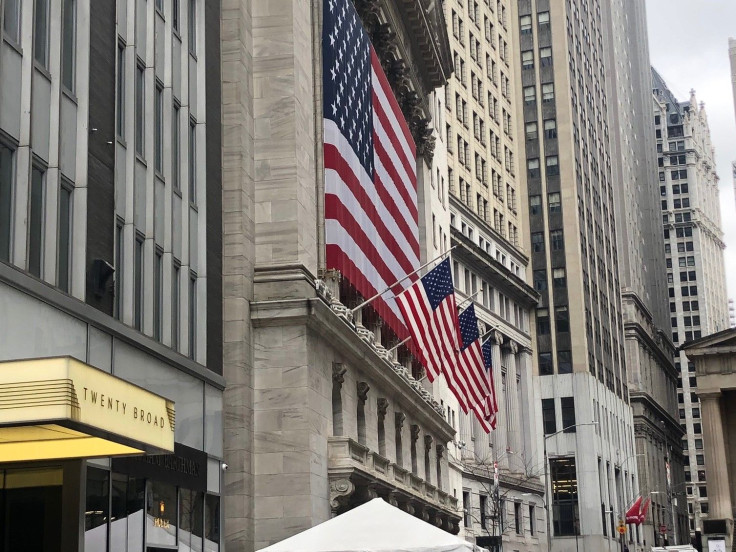Thursday’s Stock Market Close: US Equities Crater, Dow Plunges 1,860 Points in Worst Session Since March

KEY POINTS
- The Dow recorded its worst single day loss since Mar. 9, when it dropped 2,013 points
- Labor Department said 1.54 million Americans filed for initial unemployment claims last week
- Texas, California, Arizona and Florida have reported an increase in new coronavirus cases
U.S. stocks plunged on Thursday, with the Dow Jones tumbling more than 1,860 points as traders worried about a spike in coronavirus cases in some states and yet more Americans filed for unemployment claims.
The Dow Jones Industrial Average dropped 1,861.82 points to 25,128.17, while the S&P 500 fell 188.04 points to 3,002.10 and the Nasdaq Composite Index tumbled 527.62 points to 9,492.73.
The Dow recorded its worst single day loss since Mar. 9, when it dropped more than 2,013 points.
Thursday’s volume on the New York Stock Exchange totaled 6.29 billion shares with 92 issues advancing, eight setting new highs, and 2,933 declining, with four stocks setting new lows .
Active movers were led by Genius Brands International Inc. (GNUS), Bank of America Corp. (BAC) and NIO Inc. (NIO).
The U.S. Labor Department said 1.54 million Americans filed for initial unemployment claims last week, fewer than expected, and a decline from the prior week.
Jo Ling Kent of NBC News tweeted: “Good news is that it's the 10th straight week of declines, but this new big number also puts us at about 42 million jobless claims filed since mid-March.”
Some counties in Texas, California, Arizona and Florida have reported an increase new coronavirus cases or hospitalizations, raising fears that the pandemic is far from over. On the whole, more than 2 million Americans have been infected by the virus.
“There is a new wave coming in parts of the country,” said Eric Toner of the Johns Hopkins Center for Health Security. “It’s small and it’s distant so far, but it’s coming.”
“You’re seeing the psychology in the market get retested today” said Dan Deming, managing director at KKM Financial. “The sense is maybe the market got ahead of itself, which makes sense given the fact that we’ve come so far so fast. The reality is this thing’s going to linger longer than probably the market had through of.”
Dennis DeBusschere, macro research analyst with Evercore ISI, warned that accommodative monetary policy from the Federal Reserve will not “offset a severe COVID second wave.”
“With [Texas, Arizona, California reporting] new cases and hospitalizations increasing and investors concerned that recent [protests] will fuel a wave of infections, the risk of persistently weak economic and earnings growth has increased. S&P fair value estimates are falling as a result,” he said.
Traders were also assessing the grim outlook on the economy issued by the Fed on Wednesday.
“The Fed understands we are just in the beginning phases of the economic recovery and making rash changes to policy or forward guidance is premature at this time,” said Charlie Ripley, senior investment strategist for Allianz Investment Management.
Danielle DiMartino Booth, CEO and chief strategist of Quill Intelligence, and a former Fed advisor, commented: “While [the] Fed was successful in helping the stock market recover from the coronavirus-driven selloff in March, the jury is out on how much the Fed is helping the economy recover. The Fed has a problem of its own making. Most market participants are convinced that interest rates will be lower for as far as the eye can see. The market is currently pricing in no rate hikes for at least three years, which is less than the seven-year duration of near-zero interest rates that took place after the last crisis in 2008.”
Overnight in Asia, markets finished lower. The Shanghai Composite fell 0.78%; Hong Kong’s Hang Seng retreated 2.27%; while Japan’s Nikkei-225 plunged 2.82%.
In Europe markets closed sharply lower, as Britain’s FTSE-100 dropped 3.99%, while France’s CAC-40 tumbled 4.71% and Germany’s DAX fell 4.47%.
Crude oil futures plunged 8.59% at $36.20 per barrel, Brent crude fell 0.57% at $38.33. Gold futures gained 0.8%
The euro edged down 0.7% at $1.1299 while the pound sterling dropped 1.18% at $1.2595.
The yield on the 10-year Treasury plunged 12.7% to 0.653% while yield on the 30-year Treasury dropped 7.83% to 1.401%.
© Copyright IBTimes 2025. All rights reserved.





















